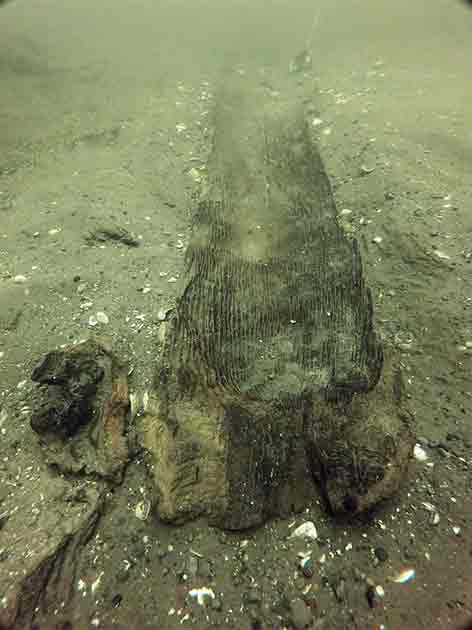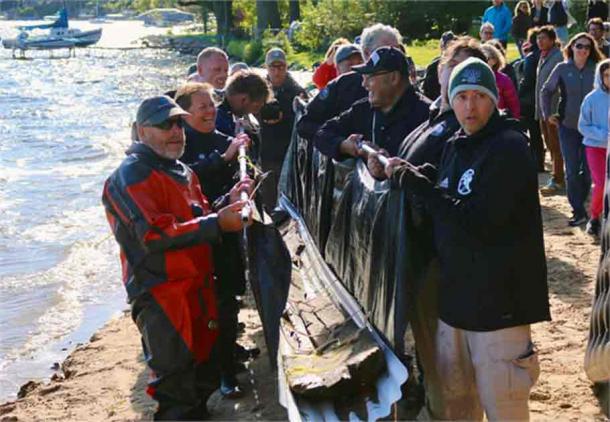
11 Ancient Canoes at Lake Mendota Reveal Wisconsin's Early Civilizations
Archaeologists from the Wisconsin Historical Society have unearthed up to 11 ancient canoes at the bottom of Lake Mendota in Madison, Wisconsin, offering new insights into the region’s early civilizations. Among these remarkable finds is a dugout canoe estimated to be approximately 4,500-years-old, making it the oldest canoe ever discovered in the Great Lakes region. This discovery not only sets a new record but also deepens our understanding of the technological and cultural practices of the ancient peoples who once inhabited the area.
The Journey to Discovery
The journey to this significant discovery began in 2021 when a dive team excavated a 1,200-year-old canoe from Lake Mendota, Madison’s largest lake. Nearly a year later, divers successfully retrieved a second wooden boat estimated to be 3,000-years-old. At the time, this canoe was considered the oldest of its kind ever found in the Great Lakes region. However, this record was shattered with the recent unearthing of an even older elm canoe, dating back to around 2,500 BC, shown in the top image.
Wisconsin Public Radio (WPR) notes how in total, the archaeologists have discovered as many as 11 ancient canoes in a section of Lake Mendota, including the two excavated in 2021 and 2022. The canoes range in age from 800 to 4,500-years-old, representing different periods and potentially multiple generations of canoe builders.
Dr. Amy Rosebrough, State Archaeologist for the Wisconsin Historical Society explains of the remarkable set of findings on the Wisconsin Historical Society website:
“What we thought at first was an isolated discovery in Lake Mendota has evolved into a significant archaeological site with much to tell us about the people who lived and thrived in this area over thousands of years and also provides new evidence for major environmental shifts over time.”
- 1,200-Year-Old Ho-Chunk Dugout Canoe Found In Wisconsin Lake
- Europe’s Famous Mesolithic Pesse Canoe: Earth’s Oldest Known Boat

A 3,000-year-old canoe sits in its original resting place at the bottom of Lake Mendota in Madison following excavation work. (Tamara Thomsen/ Wisconsin Historical Society)
Insights into Early Civilizations
The ancient canoes provide solid evidence of an archaic civilization that flourished between 3,500 and 4,500-years-ago in what is now known as Wisconsin’s Four Lakes Region. Amy Rosebrough suggested that the canoes might have been intentionally submerged to prevent them from freezing and warping during the winter months, only to be buried by natural forces over time. This hypothesis indicates a sophisticated understanding of preservation techniques by these early people.
The canoes were discovered in the ancestral territory of the Ho-Chunk Nation. Researchers believe the canoes were built by ancestors of modern-day Indigenous nations. The Ho-Chunk Nation refers to the Four Lakes Region as Dejope and to Lake Mendota as Tee Waksikhominak. These discoveries affirm the long-standing presence and ingenuity of indigenous peoples in the region.
Bill Quackenbush, historic preservation officer for the Ho-Chunk Nation, emphasized the cultural significance of these canoes. “Seeing these canoes with one’s own eyes is a powerful experience,” Quackenbush said, quoted in the WPR report. “They serve as a physical representation of what we know from extensive oral traditions that Native scholars have passed down over generations.” These artifacts provide a tangible connection to the past, reinforcing the continuity and resilience of Indigenous cultures.
- Earliest Neolithic Boats Found in Mediterranean Date Back to 5,000 BC
- Papua New Guinea’s Sepik River Rituals

Retrieving the canoes resembles a rescue operation. (Wisconsin Historical Society)
Preservation and Future Research
To better understand these ancient artifacts, the Wisconsin Historical Society has partnered with the Ho-Chunk Nation and other tribal historic preservation officers to conduct ground-penetrating radar (GPR) studies of the frozen lake. This non-invasive technique, spearheaded by Quackenbush, is essential for uncovering and analyzing ancestral sites without disturbing them. GPR studies conducted in 2022 and 2023 have provided valuable data, with further expeditions planned for later this year.
While the 1,200 and 3,000-year-old canoes are being preserved and will eventually be displayed at the Wisconsin History Center, set to open in 2027 at Capitol Square in downtown Madison, the remaining canoes will likely stay submerged. These ancient boats are too fragile to withstand recovery and preservation due to prolonged exposure to natural elements and human disturbances. The decision to leave the majority of the canoes in place was made in collaboration with Tribal Historic Preservation Officers after determining that these artifacts were not physically intact enough to survive the recovery process.
Further studies are planned to learn as much as possible from the submerged canoes. The Wisconsin Historical Society plans to collaborate with the Iowa Office of the State Archaeologist and the University of Iowa to use sonar boats for further mapping of Lake Mendota. This advanced technology will help researchers gain a more comprehensive understanding of the lake’s archaeological landscape.
Top image: A 4,500-year-old dugout canoe found in Lake Mendota. Source: Wisconsin Historical Society
By Gary Manners















